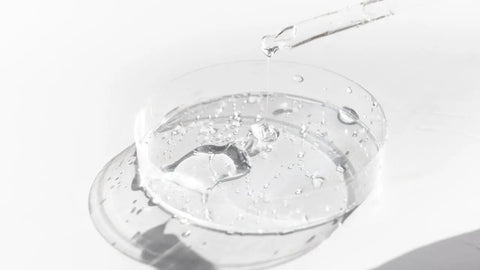Unlocking the Secrets of Salicylic Acid: Your Path to Healthy, Glowing Skin
Are you struggling with acne, blackheads, or oily skin? Discover how Salicylic Acid, a superstar BHA (Beta Hydroxy Acid), can help you achieve clearer, smoother, and more radiant skin. Here’s everything you need to know about this powerful ingredient and how to incorporate it into your skincare routine.
1. Meet Salicylic Acid: The Everyday BHA
Salicylic Acid is an oil-soluble exfoliant known for its ability to clear pores and reduce inflammation. It works by dissolving the bonds between dead skin cells, allowing them to shed and unclog pores, preventing acne and blackheads. Found naturally in plants like willow bark, Salicylic Acid is a gentle yet effective solution for those with acne-prone skin.
2. The Marvel of Salicylic Acid: How It Works
Salicylic Acid works by penetrating deep into your pores to dissolve sebum and dead skin cells. This exfoliation helps reduce the occurrence of acne and blemishes by keeping your pores clear and balanced. Regular use can reveal smoother, fresher skin by increasing cell turnover and reducing clogged pores.
3. Who Benefits from Salicylic Acid?
Whether you're dealing with oily skin, acne, or rough texture, Salicylic Acid is your go-to solution. It’s particularly effective for oily skin as it can break down excess sebum and prevent clogged pores. Dry or sensitive skin can also benefit, but it's essential to use it in moderation.
4. Salicylic Acid and Acne: A Perfect Match
If acne is your primary concern, Salicylic Acid is your secret weapon. It works deep within the skin to clear pores and reduce redness and inflammation. Unlike some harsh acne treatments, it’s non-comedogenic, meaning it won’t clog pores—perfect for acne-prone skin.
5. Using Salicylic Acid During the Day
Salicylic Acid is effective both day and night, but remember to apply sunscreen with SPF 30 or higher during the day, as Salicylic Acid can increase your skin’s sensitivity to UV rays.
6. Side Effects – What You Need to Know
Most people tolerate Salicylic Acid well, but some may experience mild dryness or redness. If irritation occurs, reduce the frequency of use. It’s always good practice to consult with a dermatologist before introducing a new product.
7. Pregnant or Breastfeeding? Use with Caution
It’s recommended to avoid Salicylic Acid if you are pregnant or breastfeeding. Always check with your healthcare provider before using skincare products during pregnancy.
8. Beyond the Face: Salicylic Acid for the Body
Salicylic Acid isn’t just for your face! It can be effective for treating body acne and rough skin. Look for body washes or moisturizers that include Salicylic Acid for a smoother body texture.
9. Salicylic Acid vs. Other Acids: What’s the Difference?
Salicylic Acid stands out from other acids like AHAs (Alpha Hydroxy Acids) because it’s oil-soluble. This allows it to penetrate deeper into the pores, making it especially effective for acne and oily skin.
10. How Often Should You Use Salicylic Acid?
Salicylic Acid can generally be used once or twice a day, depending on your skin’s tolerance. Start slowly and increase usage as your skin adapts.
Frequently Asked Questions (FAQs)
-
Can I use Salicylic Acid if I have dry skin?
- Yes, it can be used on dry skin, but it’s best to use it in moderation and moisturize afterward.
-
Can I use Salicylic Acid in the sun?
- Yes, just make sure to apply sunscreen with SPF 30 or higher to protect your skin.
-
What are the side effects of Salicylic Acid?
- Mild dryness or irritation may occur. Reduce usage if irritation persists.
-
Is Salicylic Acid safe during pregnancy?
- It’s best to avoid Salicylic Acid while pregnant or breastfeeding. Always consult with your doctor for advice.





Comments (0)
There are no comments for this article. Be the first one to leave a message!